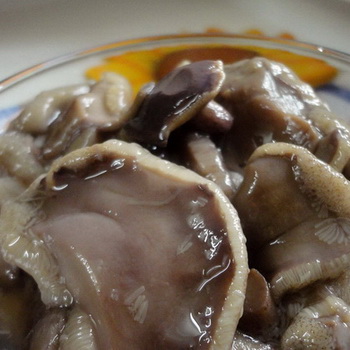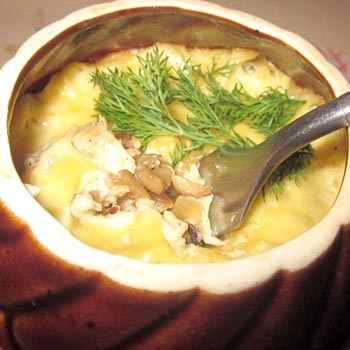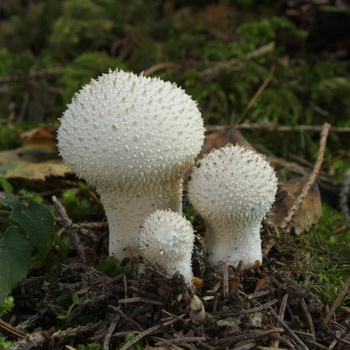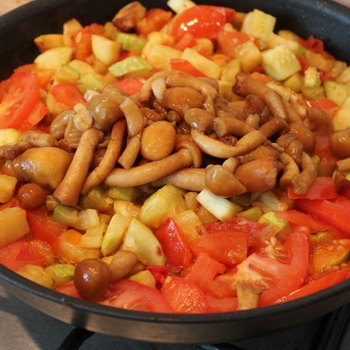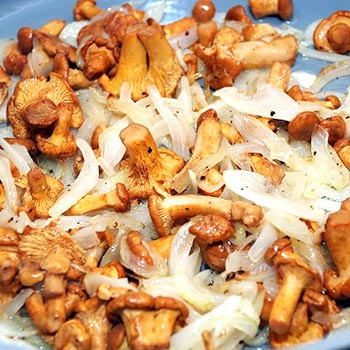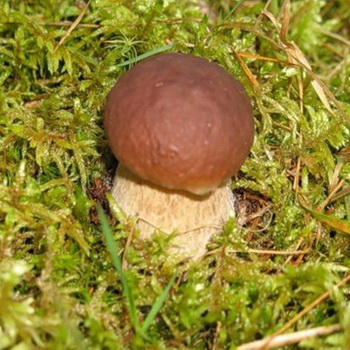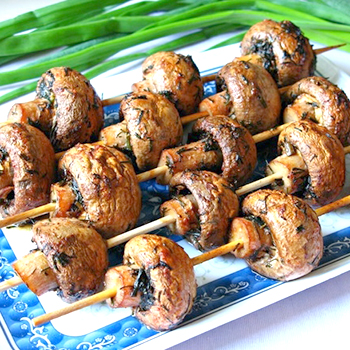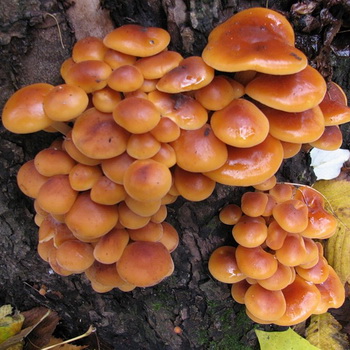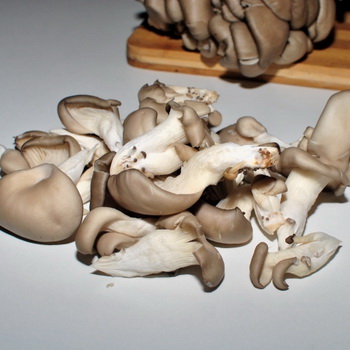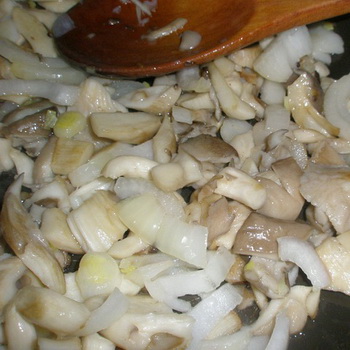Hanging mushroom (cherry orchard): photo and description of the mushroom, twins of the cherry
 Category: edible.
Category: edible.
Other names: sub-cherry, willow, cherry, common clitopilus.
Latin name pendant (Clitopilus prunulus) literally translates to "little plum". This is due to the fact that the color of young plums is completely similar to the color of this mushroom.
The sub-cherry also owes its name to the places of distribution - very often the mushroom and cherry settle under the cherry and plum trees.
Below you can familiarize yourself with the description and photos of the hanging plant, learn about its counterparts and their use in cooking and traditional medicine.
Hat (diameter 5-13 cm): matte, white or grayish, darkens noticeably when pressed. Over time, it changes shape from hemispherical to flat or strongly depressed. The edges are usually tucked towards the inner side, and there is often a small bump in the center. Slightly pubescent, slippery and sticky to the touch in rainy or damp weather, and smooth in dry weather.
Leg (height 3-9 cm): of the same color as the cap, solid, often curved, cylindrical and widening from bottom to top. Covered with a powdery bloom or weak down.


Pay attention to the photo of the mushroom and cherry: its narrow plates change color as it grows. At first they are white or light yellow, then they turn light pink.
Pulp: dense, white, very soft. Has a characteristic smell of fresh flour. Some mushroom pickers claim that the aroma of the cherry tree resembles a cucumber one.


Hanging doubles: waxy talkers (Clitocybe cerussata) and whitish (Clitocybe dealbata). The hanging plant is distinguished by the absence of watery rings on the cap and the color of the plates in adult mushrooms. Externally, it is similar to the hawthorn and bitter seroplate (Clitopilus mundulus), but its cap has concentric cracks, and the flesh is very bitter.
When it grows: from early July to mid-October in temperate European countries.


Where can I find: on acidic and clayey soils of all types of forests, often found next to birches and oaks. It can also grow near garden trees - plums or cherries.
Eating: in any form, subject to preliminary boiling for 15-20 minutes. It is not recommended to store unprocessed mushrooms for a long time.
Application in traditional medicine (data not confirmed and not passed clinical trials!): in the form of an extract with strong anticoagulant properties.
Important! The sub-cherry mushroom looks very similar to many deadly poisonous mushrooms, it is often possible to distinguish them only in laboratory conditions, so it is not recommended to collect it by little experienced mushroom pickers.

